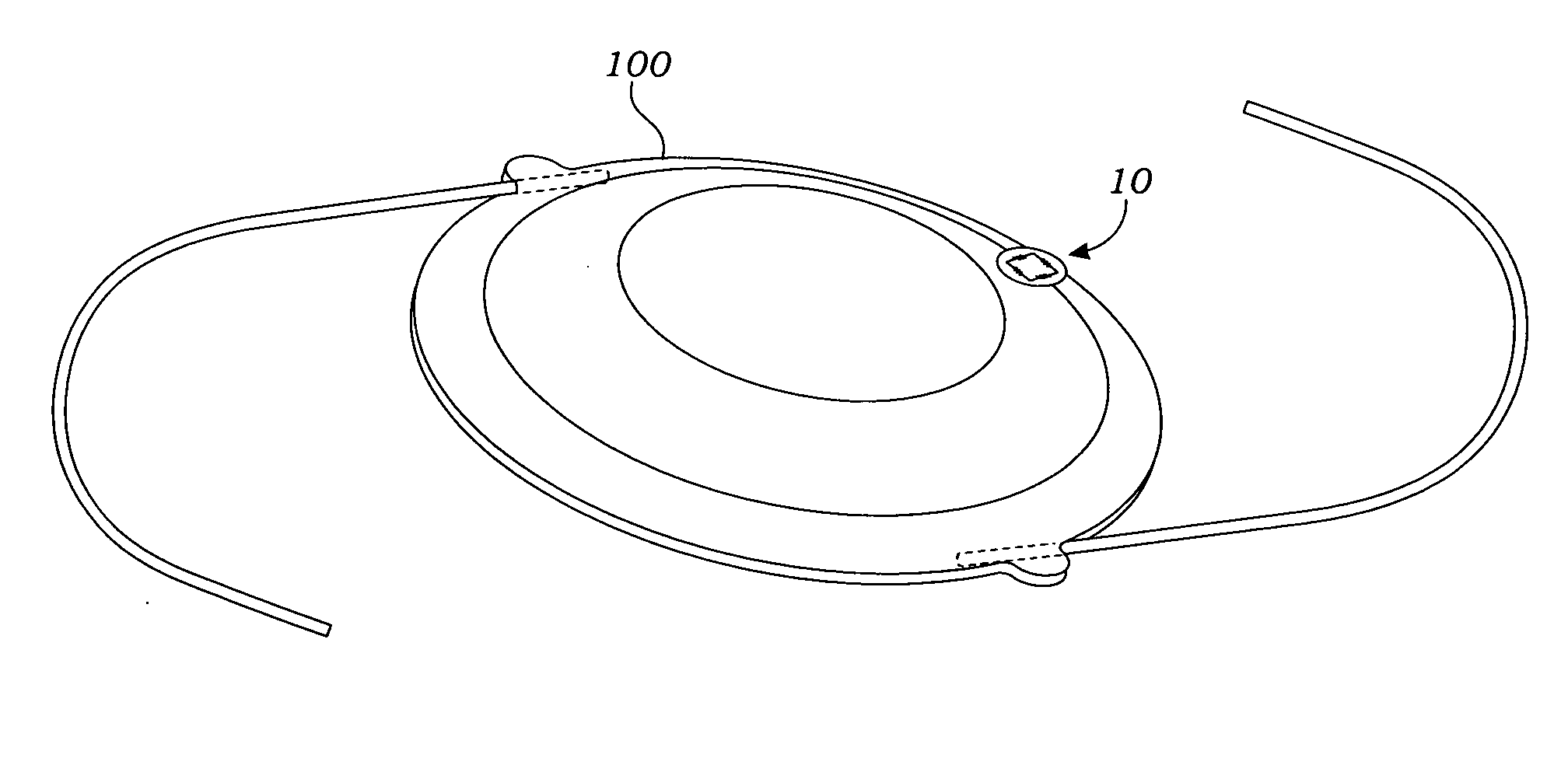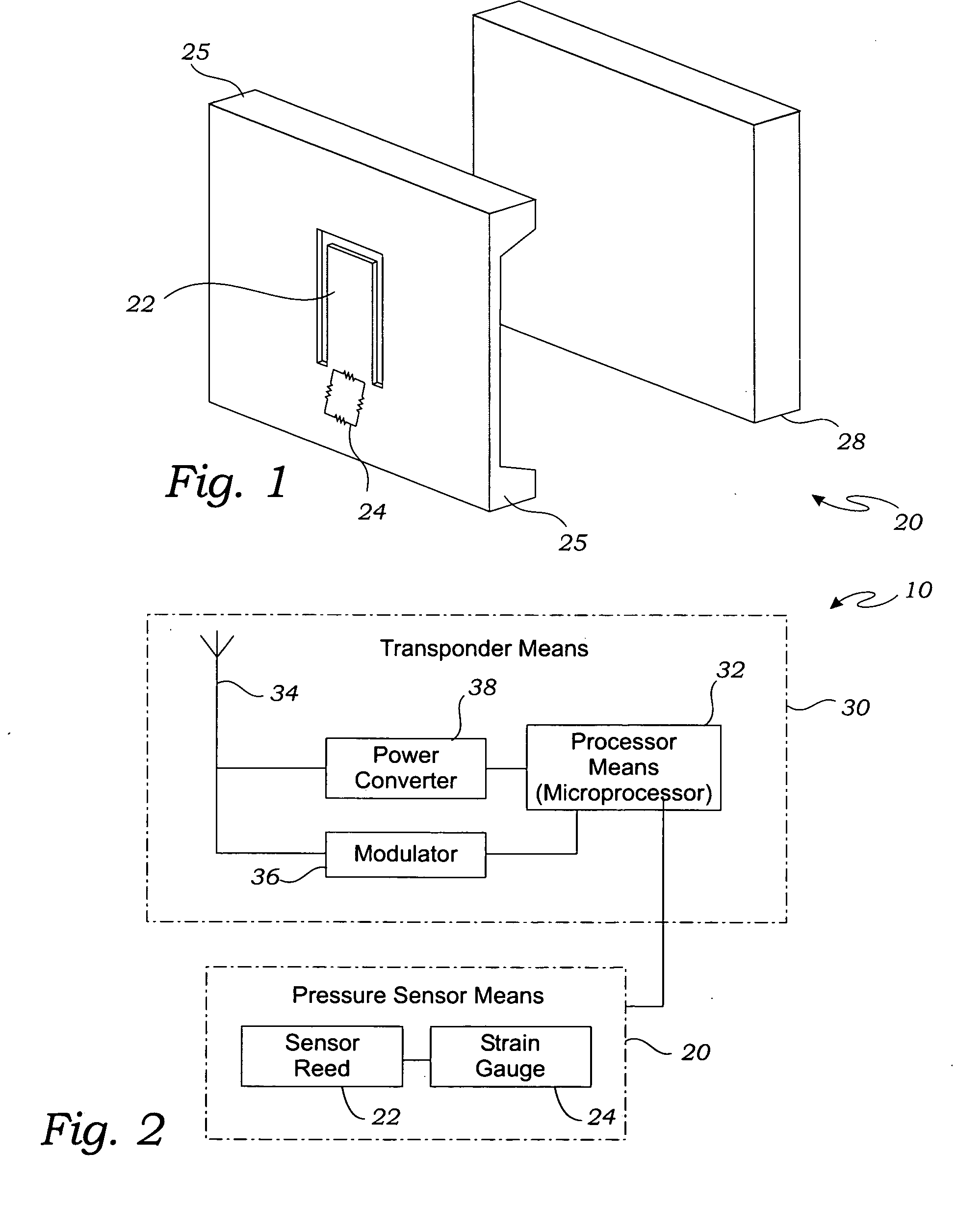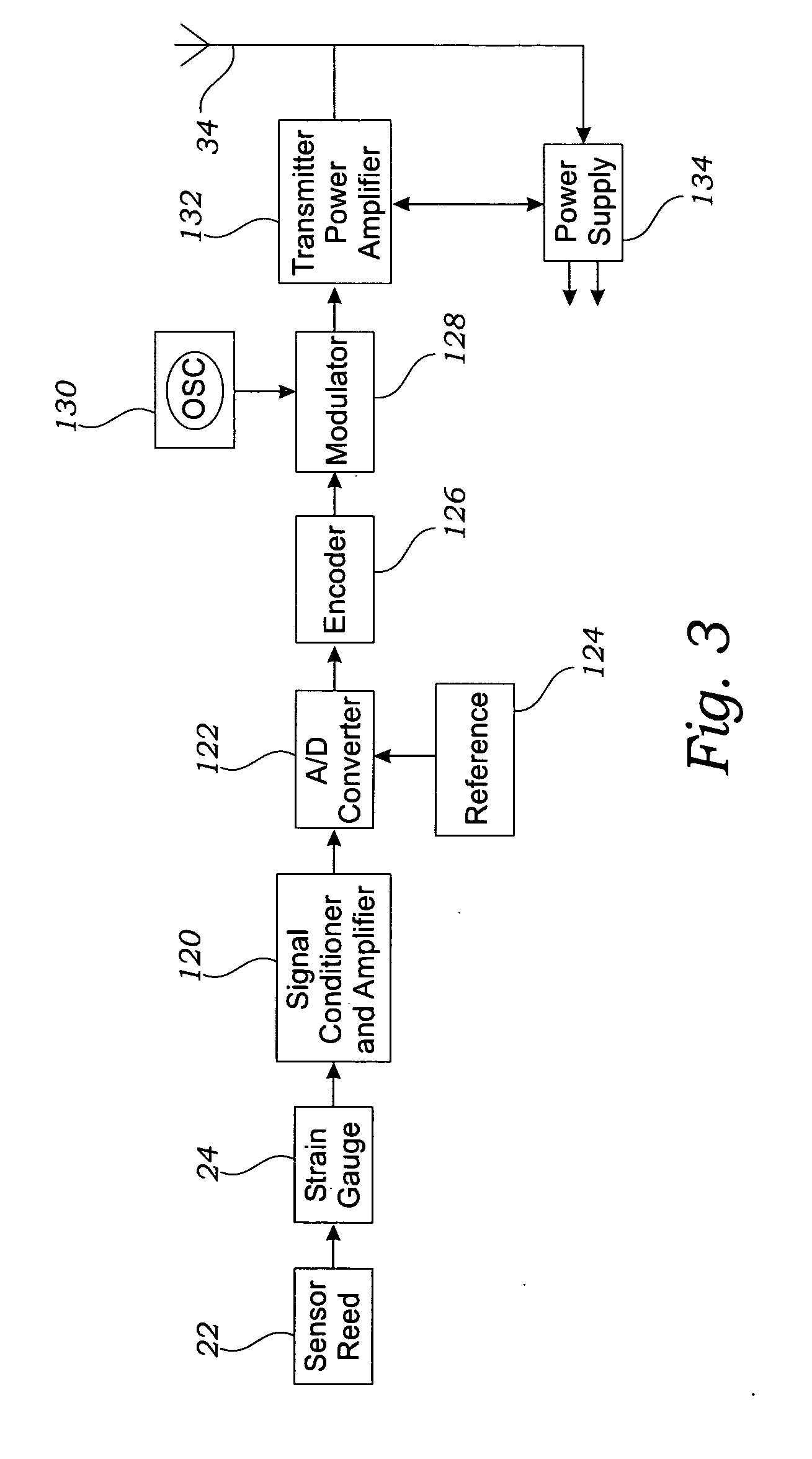Intraocular pressure sensor and method of use
a technology of intraocular pressure sensor and sensor body, which is applied in the field of medical devices, can solve the problems of unsatisfactory types of devices, and prior art does not teach intraocular pressure sensors having the construction and benefits
- Summary
- Abstract
- Description
- Claims
- Application Information
AI Technical Summary
Benefits of technology
Problems solved by technology
Method used
Image
Examples
first embodiment
[0058] In a first embodiment, as shown in FIG. 4, the intraocular pressure sensor 10 may be adapted to be operably installed in a contact lens 60 or similar eye 12 canopy that is adapted to be placed directly on the eye 12. The intraocular pressure sensor 10 is used in conjunction with a contact lens 60 having an inner lens surface 62 and an opposing outer lens surface 64. The inner lens surface 62 is adapted to operably contact the eye 12. The intraocular pressure sensor 10 is operably mounted on the contact lens 60 so that the pressure sensor 20 operably contacts the eye 12 when the contact lens 60 is operably placed on the eye 12.
second embodiment
[0059] In a second embodiment, as shown in FIG. 5, the intraocular pressure sensor 10 is adapted to be operably installed on an intraocular lens 100 that is adapted to be surgically implanted into the eye 12. The intraocular lens 100 may be constructed of polymethylmethacrylate (PMMA) and may be operatively installed in the eye 12 using surgical techniques well known in the art. The pressure sensor 20 is operatively positioned on the intraocular lens 100 to enable measurement of the pressure of the eye 12.
Glaucoma Drainage Device
third embodiment
[0060] In a third embodiment, as shown in FIGS. 6-7, the intraocular pressure sensor 10 may also be adapted to be used on conjunction with a glaucoma drainage device 40. The glaucoma drainage device 40 includes a lumened tube 42 and an explant plate 48. The lumened tube 42 has a proximal end 44 and a distal end 46. The explant plate 48 has an internal surface 50 and an opposing external surface 52 that together terminate in a plate perimeter 54. The plate perimeter 54 is shaped to fit on the eye 12 and the internal surface 50 is concave to define an internal cavity 56 when the plate perimeter 54 is positioned on the eye 12. The proximal end 44 of the lumened tube 42 can be positioned through a tube aperture 58 of the explant plate 48 that is adjacent the plate perimeter 54. During surgery, the distal end 46 of the lumened tube 42 is positioned within the eye 12, to relieve pressure from within the eye 12 as directed by the doctor. The intraocular pressure sensor 10 is operable posit...
PUM
 Login to View More
Login to View More Abstract
Description
Claims
Application Information
 Login to View More
Login to View More - R&D
- Intellectual Property
- Life Sciences
- Materials
- Tech Scout
- Unparalleled Data Quality
- Higher Quality Content
- 60% Fewer Hallucinations
Browse by: Latest US Patents, China's latest patents, Technical Efficacy Thesaurus, Application Domain, Technology Topic, Popular Technical Reports.
© 2025 PatSnap. All rights reserved.Legal|Privacy policy|Modern Slavery Act Transparency Statement|Sitemap|About US| Contact US: help@patsnap.com



